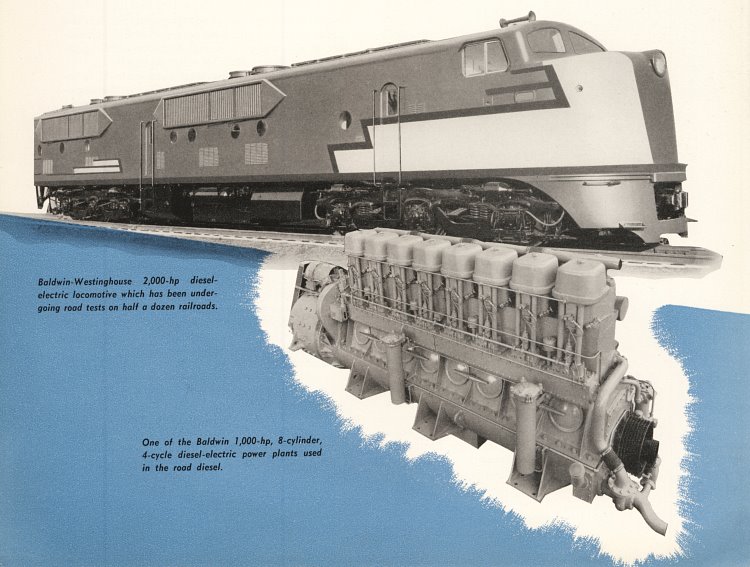|
win and Westinghouse in building straight elec- trics, are reflected in the Baldwin-Westinghouse diesel-electric switching and transfer locomotives now operating from coast to coast. Therefore, it is not surprising that the new main line diesel- electric is proving successful in both freight and passenger service under many different types of operating conditions. The streamlined blue, cream and red body of the Baldwin-Westinghouse main liner is already a familiar sight on a number of railroads which have cooperated in a series of service tests. It was first tried out in both freight and passenger ser- vice on the lines of the Reading Company. For a period of two weeks it operated on a regular two-a-day round trip passenger run between Bal- timore and Washington on the lines of the Balti- more & Ohio Railroad. Subsequently the locomotive was given a series of tests, in various types of service and under widely varying operating conditions, on the lines |
of the Richmond, Fredericksburg & Potomac; At- lantic Coast Line; Central of Georgia; Seaboard Air Line; Louisville & Nashville; Illinois Central System; Chicago & Eastern Illinois; Chicago. Bur- lington & Quincy; Denver & Rio Grande Western; Missouri Pacific Lines; and the Wabash Railroad. The locomotive used in these tests is a 2,000-hp "A" unit with the operator's compartment at the head end. It is suitable for either freight or pas- senger service in cases where the requirements do not exceed its rated capacity. For heavier ser- vice, two "A" units can be coupled together, back to back, to form a 4,000-hp locomotive which can be operated equally well in either direction without the necessity of turning at terminals. A 2,000-hp -B- unit, similar to the "A" but lacking the streamlined front end and operator's compart- ment, can be coupled between two "A" units to form a double-ended, 6,000-hp locomotive capable of handling the heaviest freight or high-speed passenger trains. |

|
5 |